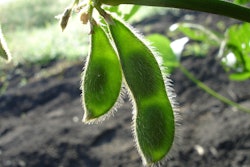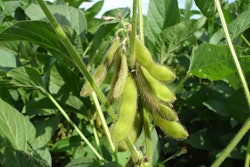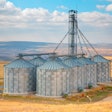USDA Reports Oilseed And Grain Crushing
May soybean crush was 173.5 million bushels, down 6.1 million from last year and is the second largest crush for the month.
The daily crush slipped from 5.7 million bushels/day to 5.6 million, the lowest rate in 2020/21, but rates are expected to start climbing in June and July.
Total industry crush for September through May is 16.2 million bushels above last year to a record 1,644 million bushels.
May meal production was 4.1 million tons, down 118,000 from last year, and stocks rose 189,000 to 641,000 tons, the high of the marketing year.
USDA reported corn used for ethanol in May at 448 million bushels, up compared to 410 million in April and 301 million last year.
The corn use implied the ethanol yield at 2.96 gallons/bushel up from 2.91 last month and the highest of the marketing year.
Sorghum use was reported for the first time in 9 months at 326,000 bushels.
FBN’sTake OnWhat It Means For The Farmer:Scheduled maintenance downtimes for soy processors remained large in May, which restricted crush rates. However, with the large April and May downtimes now out of the way, crush rates should be higher in upcoming reports. USDA’s crush projection looks adequate and likely won’t be adjusted in USDA’s July report. The recent pace of ethanol production also supports the USDA's current corn usage forecast.

South America Crop Updates
The Buenos Aires Grain Exchange reported corn harvest progress was 52% complete compared to 48% last week, and behind the 58% average pace.
The exchange crop forecast is 48 million tonnes versus the USDA at 47 million, as yield results continue to come in above expectations.
Argentina’s wheat seeding is at 84% complete, continuing ahead of the average of 79%.
Moisture conditions were 67% optimum to favorable compared to just 35% last year.
In Brazil, Safras & Mercado cut its safrinha corn forecast to 2,425 million bushels, 27% less than the projection of 3,308 million bushels made in January.
The projected average yield is now 67.9 bushels per acre, 23% less than the average of 87.9 bushels per acre in 2020.
Frosts seen in Brazil’s Paraná, Mato Grosso do Sul and São Paulo, on June 29 and 30, should increase the safrinha corn losses.
FBN’sTake OnWhat It Means For The Farmer:Recent damage from cold temperatures in Brazil is still being assessed, but the quality will also be an issue. Brazil’s government published a new regulation to align rules for GMO crops. The measure went into effect on July 1, and will make it easier to import more soybeans and corn from the US. We continue to expect to see import demand favor the US later in the year.
FBN Market Advisoryservices are offered by FBN BR LLC, dba FBN Brokerage, FBN BR and FBN Market Advisory (NFA ID: 0508695)
The risk of trading futures and options can be substantial and may not be suitable for all investors. Past performance is not necessarily indicative of future results.
This is not an offer or solicitation in any jurisdiction where we are not authorized to do business or where such offer or solicitation would be contrary to the local laws and regulations of that jurisdiction, including, but not limited to, persons residing in Australia and Canada.



















